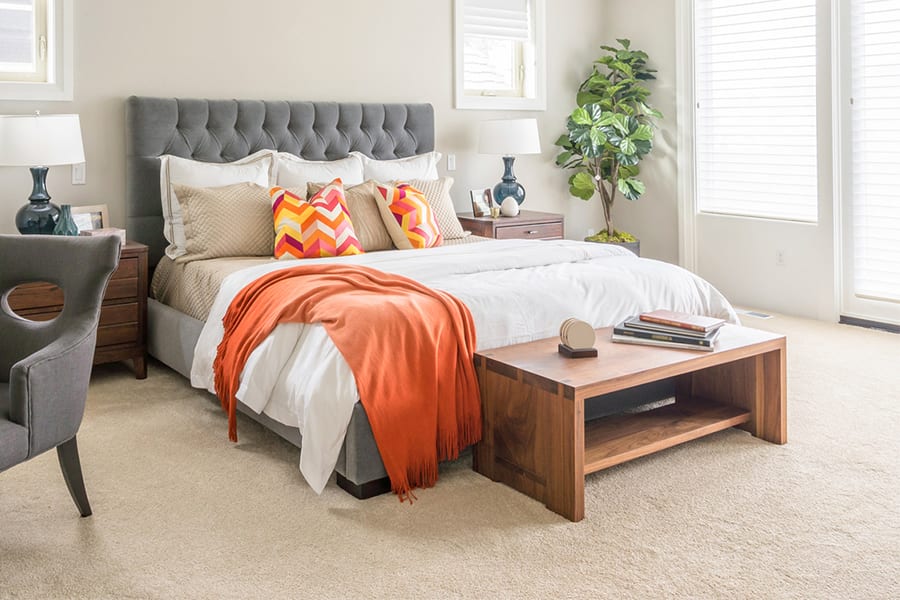Why you need to know about carpet fiber
Carpet adds style to your home, and that, combined with its functionality and sustainability, makes it the right choice for your home. A soft surface provides safety and cushioning from hard falls, offers thermal insulation, improves indoor air quality, and, as study after study has shown, aids health. Modern rugs have evolved to be durable and eco-friendly, withstand heavy foot traffic, and offer better staining and fading resistance. When shopping at our carpet store in Friday Harbor, WA, keep in mind that fiber will probably be the most critical decision you'll make.
Fiber: the main component of a rug
There are five most used fibers. Nylon is the most popular, often seen in carpet installations. It's soft, durable, stain-resistant, stands up to mold and mildew, and holds its color well. It is affordably priced and, if properly maintained, can last for years, making it the most durable of the synthetic fibers.
Wool is natural, luxurious, long-lasting, and the softest carpet fiber you can find. Pure wool is harvested from nature (sheep), so there are no chemicals or additives. It is pricey, but some manufacturers blend it with acrylics to bring down the price.
Olefin (polypropylene) is budget-friendly, highly stain-resistant, and is almost as soft as nylon. Olefin is often associated with looped styles, such as Berbers, and wears very well. As a result, it is used in almost 80% of commercial installations where the facilities can be very busy with high foot traffic.
Polyester has superior inherent stain resistance qualities, is fade-resistant, and also non-allergenic. Polyester/PET, a polyester type, is made from recycled plastic bottles, making it eco-friendly. It's not as resilient as nylon which makes it a better choice for moderately trafficked floors.
Triexta has permanent stain resistance built right into the fiber. It is also ultra-strong, with some saying it’s as strong as, if not stronger, than nylon. As a special note, Triexta was developed by DuPont, the same company that brought us nylon.
Wool is natural, luxurious, long-lasting, and the softest carpet fiber you can find. Pure wool is harvested from nature (sheep), so there are no chemicals or additives. It is pricey, but some manufacturers blend it with acrylics to bring down the price.
Olefin (polypropylene) is budget-friendly, highly stain-resistant, and is almost as soft as nylon. Olefin is often associated with looped styles, such as Berbers, and wears very well. As a result, it is used in almost 80% of commercial installations where the facilities can be very busy with high foot traffic.
Polyester has superior inherent stain resistance qualities, is fade-resistant, and also non-allergenic. Polyester/PET, a polyester type, is made from recycled plastic bottles, making it eco-friendly. It's not as resilient as nylon which makes it a better choice for moderately trafficked floors.
Triexta has permanent stain resistance built right into the fiber. It is also ultra-strong, with some saying it’s as strong as, if not stronger, than nylon. As a special note, Triexta was developed by DuPont, the same company that brought us nylon.
Request an estimate
Natural or synthetic fibers?
We're asked this question all the time, but it's a matter of your personal preference and how much you value specific characteristics. While all-natural rugs may appeal to environmentalists, some may prefer a synthetic because of their more enhanced stain resistance qualities. It also depends upon the budget and your lifestyle.
We offer complimentary design consultation, so our experts can help guide you to the right choice if you're undecided. Visit the San Juan Interiors showroom for information, inspiration, and free carpet flooring measuring. We’re located in Friday Harbor, WA, convenient to Friday Harbor, WA, San Juan Island, WA, Orcas Island, WA, Lopez Island, WA and surrounding areas.
We offer complimentary design consultation, so our experts can help guide you to the right choice if you're undecided. Visit the San Juan Interiors showroom for information, inspiration, and free carpet flooring measuring. We’re located in Friday Harbor, WA, convenient to Friday Harbor, WA, San Juan Island, WA, Orcas Island, WA, Lopez Island, WA and surrounding areas.











